-
 Bitcoin
Bitcoin $109,011.2121
-0.90% -
 Ethereum
Ethereum $2,554.1185
-2.06% -
 Tether USDt
Tether USDt $1.0005
0.01% -
 XRP
XRP $2.2311
-2.31% -
 BNB
BNB $658.5491
-0.76% -
 Solana
Solana $150.7662
-3.13% -
 USDC
USDC $1.0000
0.01% -
 TRON
TRON $0.2871
1.22% -
 Dogecoin
Dogecoin $0.1674
-4.20% -
 Cardano
Cardano $0.5832
-3.77% -
 Hyperliquid
Hyperliquid $38.8533
-4.62% -
 Sui
Sui $2.9346
-3.46% -
 Bitcoin Cash
Bitcoin Cash $479.1670
-5.20% -
 Chainlink
Chainlink $13.3735
-3.75% -
 UNUS SED LEO
UNUS SED LEO $9.0432
0.33% -
 Avalanche
Avalanche $18.1550
-4.29% -
 Stellar
Stellar $0.2401
-1.74% -
 Toncoin
Toncoin $2.8152
-3.35% -
 Shiba Inu
Shiba Inu $0.0...01161
-3.82% -
 Litecoin
Litecoin $87.8956
-4.07% -
 Hedera
Hedera $0.1564
-2.39% -
 Monero
Monero $322.9969
-0.77% -
 Polkadot
Polkadot $3.4525
-5.04% -
 Dai
Dai $1.0000
-0.02% -
 Ethena USDe
Ethena USDe $1.0001
-0.01% -
 Bitget Token
Bitget Token $4.5010
-2.55% -
 Uniswap
Uniswap $7.3786
-3.93% -
 Pepe
Pepe $0.0...09810
-8.27% -
 Aave
Aave $270.8275
-3.65% -
 Pi
Pi $0.4843
-4.64%
Is it bullish if the monthly MACD crosses underwater + the weekly line stands above the 60-week moving average?
A monthly MACD cross underwater signals long-term bearishness, but if the weekly MACD stays above the 60-week MA, it may show ongoing medium-term strength despite broader weakness.
Jul 04, 2025 at 11:08 am
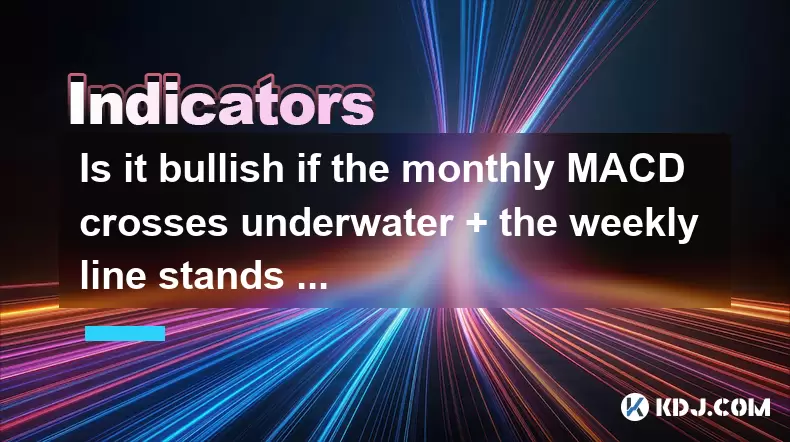
Understanding the MACD Indicator in Cryptocurrency Trading
The Moving Average Convergence Divergence (MACD) is a popular technical analysis tool used by traders to identify potential trend reversals and momentum shifts. In the context of cryptocurrency trading, where volatility is high and trends can change rapidly, understanding how to interpret the MACD becomes even more crucial. The indicator consists of three main components: the MACD line, the signal line, and the histogram. When the MACD line crosses below the signal line, it's referred to as a "bearish crossover" or "underwater" cross.
Important Note: A monthly MACD crossing underwater suggests a long-term bearish signal, but this must be analyzed alongside other timeframes and indicators for accurate interpretation.
What Does an Underwater Monthly MACD Cross Mean?
A monthly MACD cross underwater occurs when the MACD line falls below the signal line on the monthly chart. This typically signals weakening momentum and a possible shift from a bullish to a bearish trend. However, because it's based on the monthly timeframe, such a signal tends to have longer-term implications rather than immediate short-term effects.
- The monthly timeframe is one of the most significant for assessing long-term market structure.
- An underwater MACD cross may indicate that institutional or long-term holders are starting to sell or reduce positions.
- This signal should not be viewed in isolation; it needs confirmation from price action and other indicators.
The Role of the Weekly Chart and the 60-Week Moving Average
While the monthly chart gives a macro view, the weekly chart provides intermediate-term insight. If the weekly MACD remains above the 60-week moving average, it could imply that despite long-term bearish pressure, the medium-term trend is still intact.
- The 60-week moving average acts as a key support/resistance level over extended periods.
- If the price remains above this average, it might suggest that buyers are still active in dips.
- A weekly chart showing strength while the monthly shows weakness creates a divergence scenario.
Combining Timeframes: Is It Bullish?
When analyzing whether a particular setup is bullish, it's essential to look at multiple timeframes together. The combination of a monthly MACD cross underwater with the weekly line above the 60-week moving average presents a mixed picture.
- The monthly signal indicates caution due to long-term bearishness.
- The weekly signal suggests resilience and potential continuation of the uptrend.
- In crypto markets, such setups often lead to consolidation phases before a decisive breakout or breakdown.
Critical Insight: This combination does not automatically confirm a bullish trend. It reflects conflicting signals across different time horizons, requiring deeper analysis of volume, order flow, and macroeconomic conditions.
Historical Precedents in Cryptocurrency Markets
Looking back at previous cycles in the crypto market, similar patterns have occurred during transition phases between bull and bear markets. For instance:
- In early 2018, after Bitcoin reached its all-time high, the monthly MACD turned bearish while some altcoins still showed weekly strength.
- During late 2020, the opposite happened — the monthly MACD was bullish while weekly charts were consolidating.
- Such historical patterns show that divergences between timeframes are common and often precede major moves.
Key Takeaway: Historical data supports the idea that conflicting MACD signals across timeframes do not guarantee direction but highlight uncertainty and the need for careful risk management.
Practical Steps for Traders Interpreting This Signal
Traders who encounter this setup should take a structured approach to evaluate their position:
- Analyze Volume: Look for increasing or decreasing volume on both monthly and weekly charts to confirm strength or weakness.
- Monitor Key Levels: Identify critical support and resistance zones around the 60-week moving average.
- Use Additional Indicators: Incorporate RSI, Fibonacci retracements, or On-Balance Volume (OBV) to filter out false signals.
- Set Clear Stop Losses: Given the mixed signals, define your maximum risk tolerance clearly.
Actionable Tip: Use a watchlist to track assets exhibiting this pattern and wait for a breakout or breakdown confirmation before taking action.
Frequently Asked Questions
Q1: Can I trade solely based on the MACD crossover across timeframes?
No, the MACD should be used in conjunction with other tools like volume analysis, price action, and moving averages for better accuracy.
Q2: What’s the significance of the 60-week moving average compared to shorter ones?
The 60-week MA represents the long-term trend and often acts as a strong support during corrections, especially in mature assets like Bitcoin.
Q3: How often do these mixed MACD signals occur in crypto markets?
They are relatively common during transitional phases and can appear several times during a single market cycle.
Q4: Should I close my position if the monthly MACD turns bearish?
Not necessarily. Evaluate the weekly and daily charts, along with your personal risk profile, before making any decisions.
Disclaimer:info@kdj.com
The information provided is not trading advice. kdj.com does not assume any responsibility for any investments made based on the information provided in this article. Cryptocurrencies are highly volatile and it is highly recommended that you invest with caution after thorough research!
If you believe that the content used on this website infringes your copyright, please contact us immediately (info@kdj.com) and we will delete it promptly.
- Sui Price Surges Amid Lion Group's Treasury Move: What's Next?
- 2025-07-04 16:30:13
- BLAST Price Bounces Back After Token Unlock: Is the Rally Real?
- 2025-07-04 17:10:16
- Wormhole, Coinbase, and Interoperability: A New Era for Crypto?
- 2025-07-04 16:30:13
- Neo Pepe Coin ($NEOP): The Crypto Meme Coin Aiming to Eclipse Bitcoin & Ethereum?
- 2025-07-04 16:50:12
- Bitcoin Wallet Inactivity Ends: Whale Moves $1B+ BTC After 14 Years
- 2025-07-04 16:50:12
- Bitcoin Reserves, Institutional Adoption, and Cryptocurrency Strategy: A New Era
- 2025-07-04 17:10:16
Related knowledge

What is indicator confluence and why is it important for Bitcoin trading?
Jul 04,2025 at 03:14pm
Understanding the Concept of Indicator ConfluenceIndicator confluence refers to the alignment or agreement between multiple technical indicators when analyzing a financial asset, such as Bitcoin. Instead of relying on a single indicator to make trading decisions, traders use confluence to increase the probability of successful trades by ensuring that di...
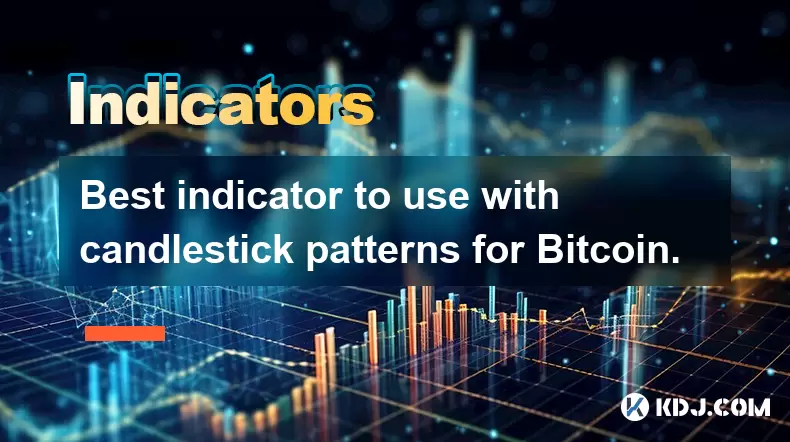
Best indicator to use with candlestick patterns for Bitcoin.
Jul 04,2025 at 12:36pm
Understanding the Role of Indicators with Candlestick PatternsIn the world of cryptocurrency trading, especially when dealing with Bitcoin, technical analysis plays a crucial role in identifying potential price movements. Traders often rely on candlestick patterns to forecast market behavior. However, these patterns alone may not always provide sufficie...
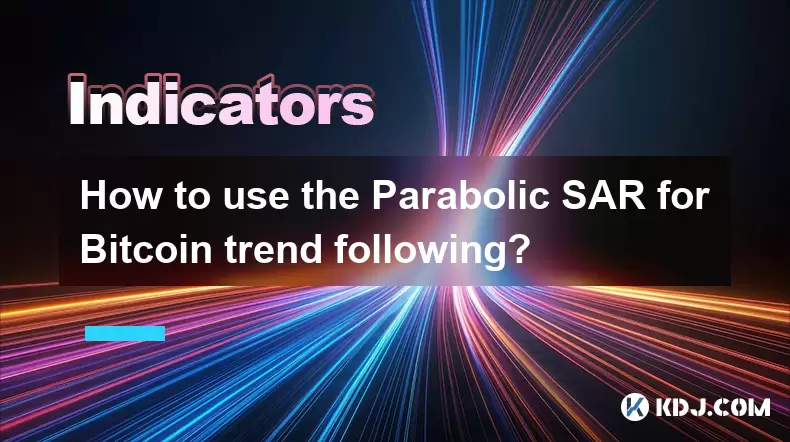
How to use the Parabolic SAR for Bitcoin trend following?
Jul 04,2025 at 05:21pm
Understanding the Parabolic SAR IndicatorThe Parabolic SAR (Stop and Reverse) is a technical analysis tool developed by J. Welles Wilder, primarily used to identify potential reversals in asset prices. In the context of Bitcoin trading, it serves as a crucial instrument for spotting entry and exit points during trending markets. The indicator appears on...
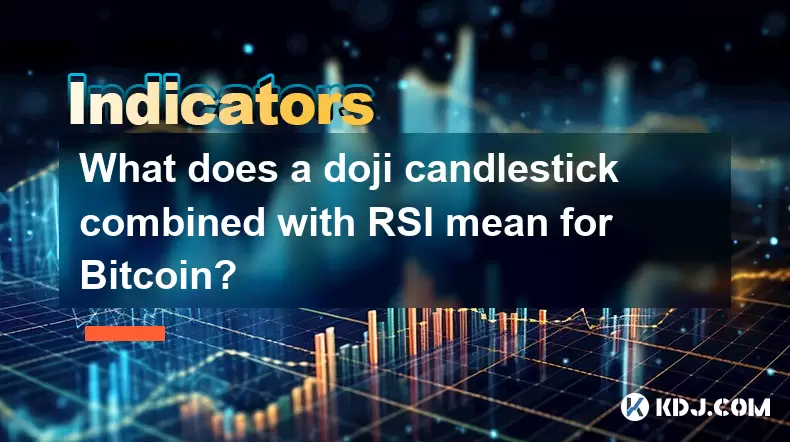
What does a doji candlestick combined with RSI mean for Bitcoin?
Jul 04,2025 at 03:08pm
Understanding the Doji Candlestick PatternA doji candlestick is a critical technical analysis pattern that signals market indecision. It forms when the opening and closing prices of an asset are nearly identical, resulting in a very small or nonexistent body with long upper and lower wicks. In the context of Bitcoin, this pattern often suggests a potent...
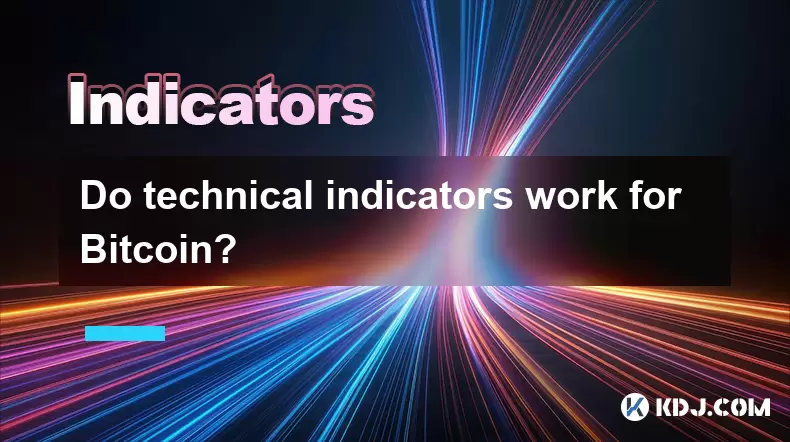
Do technical indicators work for Bitcoin?
Jul 04,2025 at 02:14pm
Understanding Technical Indicators in CryptocurrencyTechnical indicators are mathematical calculations based on historical price, volume, or open interest data used to forecast future price movements. In the context of Bitcoin, these tools are widely adopted by traders aiming to identify trends, reversals, and potential entry or exit points. While some ...
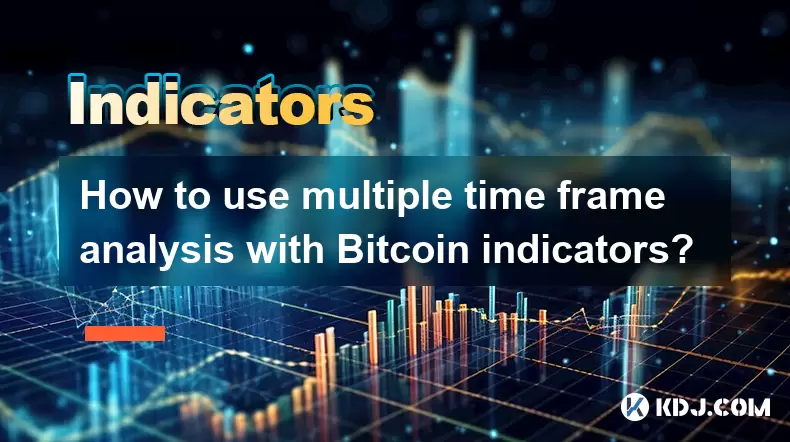
How to use multiple time frame analysis with Bitcoin indicators?
Jul 04,2025 at 11:14am
Understanding Multiple Time Frame Analysis in Bitcoin TradingMultiple time frame analysis is a strategy used by traders to gain a comprehensive view of market trends and price movements. In the context of Bitcoin trading, this method involves analyzing the same asset across different time intervals—such as 1-hour, 4-hour, daily, or weekly charts—to iden...

What is indicator confluence and why is it important for Bitcoin trading?
Jul 04,2025 at 03:14pm
Understanding the Concept of Indicator ConfluenceIndicator confluence refers to the alignment or agreement between multiple technical indicators when analyzing a financial asset, such as Bitcoin. Instead of relying on a single indicator to make trading decisions, traders use confluence to increase the probability of successful trades by ensuring that di...

Best indicator to use with candlestick patterns for Bitcoin.
Jul 04,2025 at 12:36pm
Understanding the Role of Indicators with Candlestick PatternsIn the world of cryptocurrency trading, especially when dealing with Bitcoin, technical analysis plays a crucial role in identifying potential price movements. Traders often rely on candlestick patterns to forecast market behavior. However, these patterns alone may not always provide sufficie...

How to use the Parabolic SAR for Bitcoin trend following?
Jul 04,2025 at 05:21pm
Understanding the Parabolic SAR IndicatorThe Parabolic SAR (Stop and Reverse) is a technical analysis tool developed by J. Welles Wilder, primarily used to identify potential reversals in asset prices. In the context of Bitcoin trading, it serves as a crucial instrument for spotting entry and exit points during trending markets. The indicator appears on...

What does a doji candlestick combined with RSI mean for Bitcoin?
Jul 04,2025 at 03:08pm
Understanding the Doji Candlestick PatternA doji candlestick is a critical technical analysis pattern that signals market indecision. It forms when the opening and closing prices of an asset are nearly identical, resulting in a very small or nonexistent body with long upper and lower wicks. In the context of Bitcoin, this pattern often suggests a potent...

Do technical indicators work for Bitcoin?
Jul 04,2025 at 02:14pm
Understanding Technical Indicators in CryptocurrencyTechnical indicators are mathematical calculations based on historical price, volume, or open interest data used to forecast future price movements. In the context of Bitcoin, these tools are widely adopted by traders aiming to identify trends, reversals, and potential entry or exit points. While some ...

How to use multiple time frame analysis with Bitcoin indicators?
Jul 04,2025 at 11:14am
Understanding Multiple Time Frame Analysis in Bitcoin TradingMultiple time frame analysis is a strategy used by traders to gain a comprehensive view of market trends and price movements. In the context of Bitcoin trading, this method involves analyzing the same asset across different time intervals—such as 1-hour, 4-hour, daily, or weekly charts—to iden...
See all articles

























































































